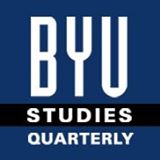BYU Studies

Keywords
BYU Studies, Chiasmus, Maya
Abstract
The last quarter century has seen a marked shift in Maya hieroglyphic studies in recognition of the presence of poetic language in the script. Poetics in indigenous Mesoamerican tradition is based primarily upon the principle of parallelism, most often in the form of coupleted discourse. Chiasmus, a rhetorical feature fully dependent upon parallelism, was one such poetic device used by ancient Maya scribes and colonial period indigenous authors, and it is still found among modern ritual specialists in some Maya communities. In this study, I explore the use and forms of chiasmus over time among various Maya groups and languages. As I show, ancient Maya scribes incorporated chiasmus into hieroglyphic texts at particular moments for emphasis, as a means of highlighting key narrative events. Furthermore, scribes would at times display considerable poetic prowess through the use of what I term “rhetorical stacking,” that is, a multiplicity of rhetorical features used simultaneously within a larger poetic construction. Chiasmus, as it turns out, is often the larger rhetorical unit within which other forms of verbal art are expressed. As a poetic tradition established in the Late Classic period (250 AD–900 AD), chiasmus still flourished in colonial period documents and has survived into modern Mayan languages for ornamental and emphatic purposes.
Recommended Citation
Hull, Kerry
(2020)
"Mirrored Poeticity: Chiastic Structuring in Mayan Languages,"
BYU Studies: Vol. 59:
Iss.
5, Article 14.
Available at:
https://scholarsarchive.byu.edu/byusq/vol59/iss5/14
